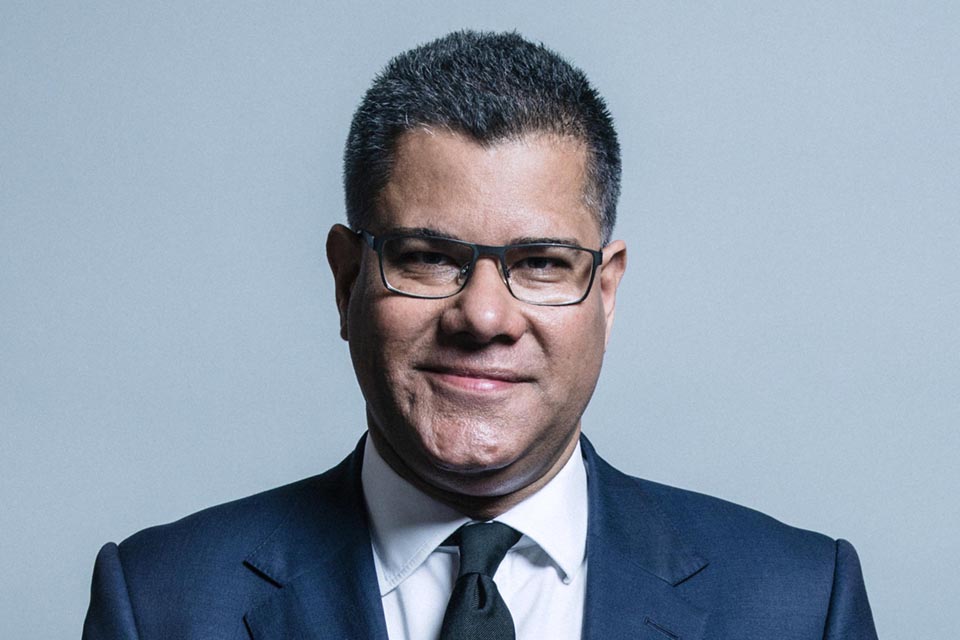International Energy Agency summit on clean energy transitions
COP26 President Alok Sharma at 'Clean Energy Transitions: Towards a Sustainable Recovery', the International Energy Agency's virtual summit to discuss measures to boost economies, create jobs, reduce global emissions and make energy systems more resilient.

Thank you so much Fatih, for hosting this event and for all the work that you and the IEA do.
Today, governments and businesses around the world are having to respond to the immediate and very acute challenge which is being posed by Covid-19.
But we also know - and this is a fact - we all acknowledge that the climate crisis has not taken any time off.
And that’s why as we look forward to COP26 next November, and as we do that we want to ramp up ambition to achieve a climate-resilient, zero-carbon economy.
As part of this we want all countries to submit more ambitious NDCs, driving further cuts in carbon emissions by 2030.
And with all nations committing to reaching net zero emissions as soon as possible.
Ahead of COP26 we have set out five areas that need particular attention: the first is energy, then transport, nature-based solutions, adaptation and resilience, and, tying it all together, finance.
With the power sector counting for a quarter of global emissions, the clean energy transition is central to tackling climate change.
To meet the goals of the Paris Agreement, the IEA - your organisation Fatih - has told us that the global transition needs to move four times faster than our current pace.
This of course presents a significant challenge. Yet we have seen that with a concerted effort can drive down the cost of new technologies.
With the market growth driving innovation, the cost of UK offshore wind, for example, has fallen by over 70% since 2012.
And this national achievement has been also been a global success story.
Today, MHI-Vestas, a Japanese-Danish joint venture, is making turbines on the Isle of Wight in the United Kingdom.
Siemens-Gamesa, a German-Spanish company, is doing the same in the northern city of Hull.
Not far away from Hull, in Grimsby, the Danish company Ørsted have set up the world’s largest offshore wind operations and maintenance centre.
Whilst off the North East coast, SSE and Equinor, from the UK and Norway respectively, are building the world’s largest offshore wind development.
And this will be able to power four and a half million homes in the UK.
Every country and company that has deployed renewable technologies has contributed to reducing their cost. And every time the global deployment of solar and wind power doubles, their costs have fallen by 28% and 15% respectively.
Today, renewables are already cheaper than new coal power in two thirds of all countries across the world.
So ahead of COP26, I hope we can continue the global success story and work together to make progress even faster.
We need to meet the goals of the Paris Agreement, we need to double the rate of global investment in clean power.
International assistance like the IEA’s Clean Energy Transitions Programme can help develop the policies to drive this investment.
The UK itself has invested over £1 billion in clean power programmes in developing countries in the last 5 years, and other countries here today have made great contributions too. So thank you to everyone who’s played their part.
But we also know that new coal plants are still being built.
We must all work together to ensure that for every country considering new power generation, for them clean power is the most attractive option.
Alongside this, we must accelerate the shift away from the 2000GW of coal plants that are already operating.
And the UK is leading by example in this case. Between April and June this year, we went 67 days without using coal power. We are committed to ending our use of coal power by 2024.
The 104 members of the Powering Past Coal Alliance share the goal of phasing out coal power.
The alliance has helped ensure that one third of the OECD’s coal power capacity is now scheduled to close.
And to go further, we must support coal-dependent countries to achieve that ‘just transition’.
This means going beyond technical assistance in the power sector, and scaling up support for new investment, jobs and development in coal-dependent communities.
And if we continue to innovate, we will continue to open up new opportunities.
Last year, the UK announced the £1 billion Ayrton Fund to help developing countries access cutting-edge energy technologies.
This will help provide affordable access to electricity for the 840 million people who lack it.
And finally, we must not forget that in every sector, energy efficiency can save costs, cut emissions, and raise productivity.
We have recently increased our funding for the IEA’s Super-Efficient Equipment and Appliance Deployment Initiative, where governments are working together to ramp up efficiency standards for appliances such as air conditioners, refrigerators and lighting.
And I invite you to join us in this effort.
So Ladies and gentlemen, ahead of COP26, we must continue to work together to make progress faster.
Lowering carbon emissions. Cutting energy costs. Raising people’s quality of life.
And creating new jobs and opportunities across the world.
Thank you.